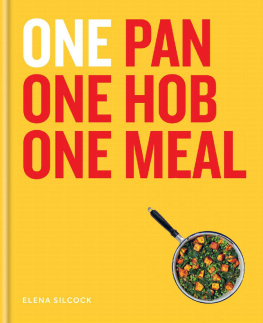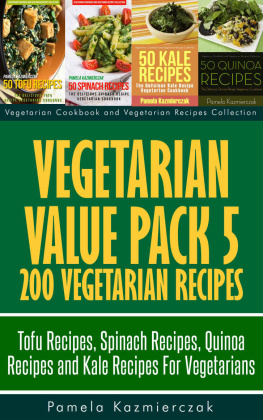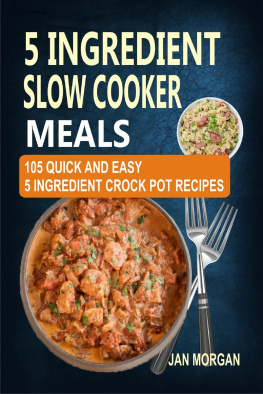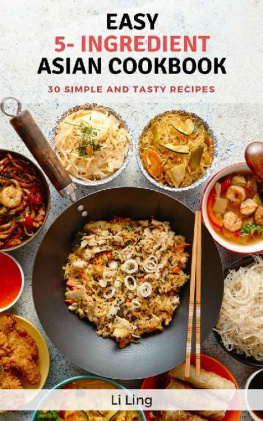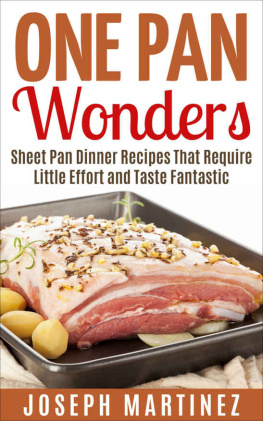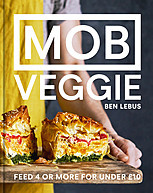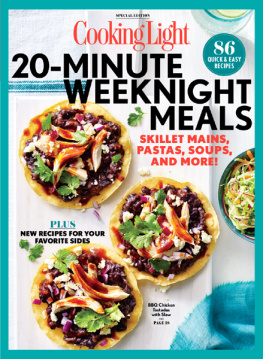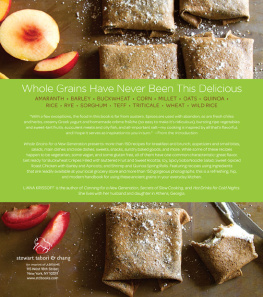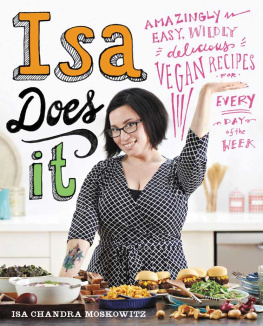

CONTENTS
HOW TO USE THIS EBOOK
Select one of the chapters from the and you will be taken straight to that chapter.
Alternatively, jump to the to browse recipes by ingredient.
Look out for linked text (which is in blue) throughout the ebook that you can select to help you navigate between related sections.
You can double tap images and tables to increase their size. To return to the original view, just tap the cross in the top left-hand corner of the screen.
INTRODUCTION
Throughout my cooking and writing career and in that, I include my teenage years of throwing a lot of things in pans to feed my hungry brothers Ive always known that, in reality, low-maintenance cooking is where its at. Fancy and fussy food has its place gracing the tables of high-end restaurants, but when it comes to cooking at home, I base my recipes around a few key ideas:
I DONT WANT TO HAVE TO WASH UP MORE THAN ABSOLUTELY NECESSARY (OR AT ALL, IF I CAN HELP IT!)
I try to use minimal tools and dishes, to serve straight out of the pan at the table and (preferably) to establish the rule that the cook doesnt wash up after dinner. These are all tricks that I keep up my sleeve to minimize time spent in rubber gloves.
I DONT WANT TO BE STRESSED
At its best, cooking should be fun. At the very least, it should not be a source of stress. I try to cook recipes that dont require endless steps, that use handy shortcuts (I wont be soaking beans overnight any time soon) and that dont need much re-reading to churn out again at speed if someone comes over for a last-minute dinner. Im also a lot less likely to forget something in the oven when its all in one pan on the stove top in front of me!
I DONT WANT TO USE A WHOLE CUPBOARD OF INGREDIENTS
I dont think recipes need to have tons of different flavours to be delicious. I use flavours that work together, and I use them sparingly. I try to use good-quality ingredients, which in reality do all the hard work for you.
I DONT WANT TO HAVE TO BUY LOTS OF INGREDIENTS
There are two ways to avoid having to run out to pick up lots of missing ingredients every time you cook. First, focus on your store-cupboard favourites. Having olive oil, garlic, ginger and lemon around usually at least halves the shopping list, and a few key spices like cumin seeds, ground coriander, fennel seeds and turmeric will generally mean that all you need to do is nip out for some fresh produce when trying a new recipe and thats the fun bit.
Secondly, figure out substitutions. Learning to substitute is by far the most valuable lesson Ive learned in a kitchen. Swap in and swap out see for some suggestions when youre stuck!
I WANT EVERYONE AT THE TABLE TO BE SATISFIED (AND IMPRESSED)
Portions should be big enough to satisfy, and hopefully anyone eating the food should have enjoyed it so much that they offer to do the washing up.
All these factors played a part in the creation of this book. Cooking in one pan makes the cooking experience so much easier and suits all kitchen sizes. It minimizes washing up and it also ensures that all your flavours are sealed in one place. It makes cooking less daunting, less stressful and more manageable. Its how everyone really wants to cook. My hope is that, as well as being easy to follow, the recipes in this book will surprise you with just how impressive a one-pan meal can be.

KEY TO SYMBOLS
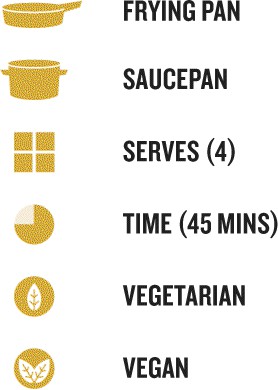
PICK A PAN
I use two kinds of pan in this book: a large frying pan and a large saucepan.

THE FRYING PAN
A large non-stick, high-sided frying pan with a lid
Get a big pan, at least 28cm (11in) in diameter. This size will work when youre cooking for one and when youre cooking for four. Things will crisp up when they need to crisp up, and you wont be endlessly trying to turn greens so they each get their turn at the base of the pan.
Make sure its non-stick. Trust me on this. One-pan cooking is great, but scraping the base of a pan coated in a layer of your lovingly prepared meal is not.
High sides are best. You dont want precious ingredients spilling out all over the stove top.
It needs a cover. You can improvise with a baking sheet, but if your frying pan has a lid, it will make your life much easier.

THE SAUCEPAN
A large saucepan or casserole dish with a lid
Get a large saucepan. Its best if you can fit a whole bag of pasta in there without having to stir too much. Even if youre cooking smaller portions, having a bigger pan gives everything a bit more room and makes it much easier to stir, especially when adding handfuls of greens to wilt down!
Choose one with a lid. For most of the saucepan recipes, youll need to cover the filling at some point. Again, you can improvise with a baking sheet, but make sure you have something you can use to weigh it down. I often add a layer of tin foil under the lid if Im slow-cooking meat: this adds an extra seal and makes sure no steam escapes.
HOW TO GET THE BEST OUT OF ONE-PAN COOKING
Now that youre cooking with one pan, here are a few tips and tricks to make the most of this low-maintenance style:
1 > Grate garlic and ginger directly into the pan when youre using them: it saves on time. You can usually do this with Parmesan as well. A microplane is a handy piece of kit to have at the ready to minimize the amount of chopping youre doing. You can also crush garlic straight into the pan, without peeling it before you put it in the garlic press.2 > Dont bother peeling things like carrots or potatoes: just give them a quick wash. Peeling is a waste of time anyway, as so much of the flavour is in the skin! Peeling ginger is also unnecessary; just grate it straight away.3 > Use your kitchen scales to measure your liquids as well as dry ingredients for most liquid ingredients, a gram and a millilitre will be the same, or almost the same (it blew my mind to discover this!). This saves you time and washing up, and often means you can combine ingredients as youre weighing them.4 > Always have lemons and limes on hand. Many recipes use citrus at the end, and its a great way to add a kick of freshness to something thats been cooking away in a pot. Lemon or lime juice will usually do the trick, and serving extra wedges at the table is also a great way to let people add a little zing of their own before eating.5 > A few toppings go a long way when it comes to flavour! A lot of these recipes are topped with flavoured yogurts, quick herby dressings or scatterings of nuts and seeds. Theyre the key to making sure the dish really impresses: they either freshen, cool or add a crunch.6 > Serve straight to the table. Gone are the days of fancy plating. Just put the pan on the table and let people serve themselves, putting on their own toppings and garnishes for an insta-ready dinner.
TRICKS AND FIXES
If your dish isnt tasting quite right or feels like its lacking a little something, dont worry. It happens, even with the best recipes. When I have a dish thats not quite there , I have a couple of fail-safe fixes on standby.
Next page
